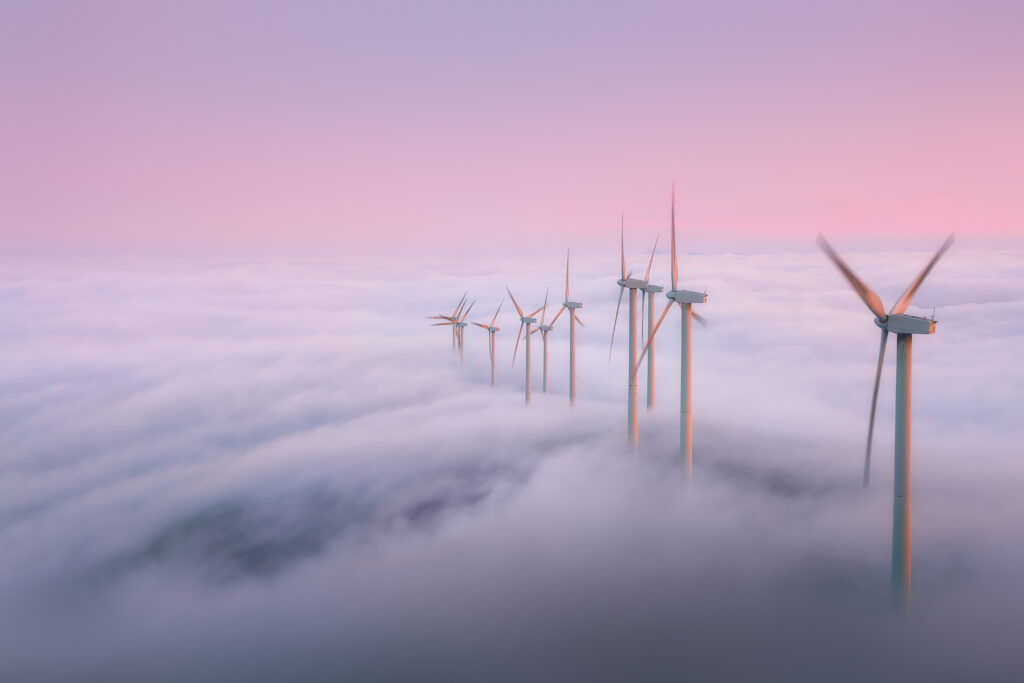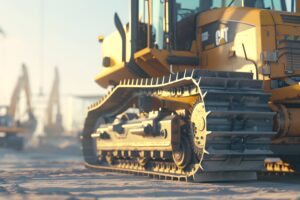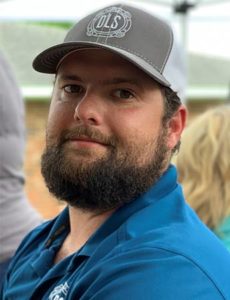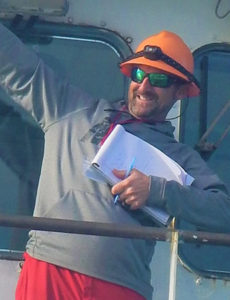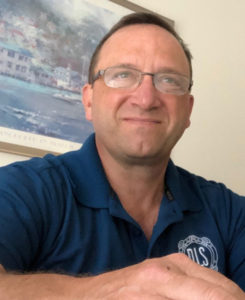- April 4, 2023
- Industry, Marine News
- The WASP Sting
“What we do see depends mainly on what we look for…”
-Sir John Lubbock
WASP, or Wind Assisted Ship Propulsion, remains a hot topic in the maritime industry as key players contemplate their strategy towards lowering greenhouse emissions. This plays into the same conversation as alternative fuels.
Primary corporate entities behind wind power are COSCO, MOL, Cargill, and K Line. It is not surprising that three of these are large Asian shipping companies that have had several decades of experience in wind assist.
There are certainly problems with WASP. For instance, wind relies entirely on weather patterns. Wind propulsion also carries a high price tag for the initial installation, despite wind itself obviously being free. But supporters would argue that the return on investment will be substantial once the initial costs are recovered. Also, don’t forget that WASP is also generally used in conjunction with fuel consumption. Soon fleets will be moving into the green, and very expensive new fuels, and wind assist will cut down on fuel consumption and costs. It will also enable ships to get to possibly widely scattered posts that can provide LNG, methane, etc.
The Magnus effect, Flettner rotor, is one of the most technologically advanced methods to obtain , and I have detailed them in earlier blogs. The newest designs have a controllable flap or trim tab that can be adjusted to increase efficiency, i.e., thrust, depending on the wind speed and the wind’s direction relative to the ship’s course. Initial tests have indicated that its use could reduce the tacking angle by 15 degrees of a standard rotor sail. This means the ship could travel 15 degrees closer to its intended course with no loss of efficiency. The flap can also increase fuel savings by up to 9.2% over a standard rotor. Rotor sails are the fastest growing WASP sector.
LNG
In the alternative fuel race, LNG, including bio-LNG and synthetic-LNG, takes first place because of its availability and use in dual-fuel engines; however, its detriment will be its cost. For this reason, LNG is considered a short to midterm solution until cleaner fuels can be produced in sufficient amounts while also more widely available. This short to midterm future is also for bio-fuels produced from bio-mass. Often, bio-fuels are mixed with regular fuel oil to reduce emissions with an allowed percentage of the mix varying by Emission Control Areas (ECAs). There is also the environmental problem of replacing bio-mass in large enough quantities.
Methanol
According to DNV, methanol is currently the second most popular fuel for new construction after LNG. Methanol is popular as it is well known in many industries and is already available in many ports as it has been a shipped product for many years. It can be carried as a liquid at ambient temperature and pressure. While it has comparatively low GHG emissions in use, its tank-to-wake emissions analysis still reveals relatively high emissions. Even being a clean fuel, it is toxic and flammable, particularly its vapors, so crew safety is a concern. It also has a lower energy density than other fuels so a high quantity must be carried, possibly at the expense of cargo space.
To reduce emissions and better comply with IMO regulations would be the use of blue methanol produced with blue hydrogen and carbon capture and green methanol produced from biomass, green hydrogen and CO2 capture. How do you get green and blue fuels? Via natural energy from windfarms, thermal or hydro production. An expensive route.
The largest shipping company in the world, Maersk, has gotten behind methanol with orders for at least 19 ships, mainly containerships, to be dual fueled with methanol. This is also seen in the cruise industry, already heavily into LNG, with Costa, Disney, and Norwegian looking into methanol for new construction. Both marine industries (container and cruise) have the advantage of using established runs and ports so they can rely on their own bunkering systems.
Hydrogen
Hydrogen fuel is still relevant in this discussion as well. Production and distribution of green hydrogen will be a billion-dollar growth industry. One estimate is $40 billion by 2030. For the 2050 goal, the estimate is between $1 trillion to $1.9 trillion with 87% spent on land-based production and distribution. It is not only a fuel but a feedstock for other blue fuels.
Norway has some of the strictest emission goals and has partially funded the construction of two short-sea bulk carriers that will be dual-fuel proportioned at 70% hydrogen and 30% marine gas oil, a slightly denser form of diesel oil. As hydrogen becomes more available, the vessels will be switched to 100% hydrogen and outfitted with hydrogen fuel cells. It is interesting to note that they will also have two rotor sails.
A step further into the future is a joint venture among 17 companies and the European Union to develop a liquid organic hydrogen carrier (LOHC) and hydrogen release unit for shipboard use. The science here is that hydrogen will be chemically bound to a thermal oil. It is transported in a liquid form in normal fuel tanks instead of the very low temperature/high pressure tanks needed for liquid hydrogen. The release unit changes the hydrogen back to a gas which goes to the fuel cells. The byproduct of this operation fuels the release unit and can also be used to heat the ship.
Ammonia
Not to forget about ammonia as a clean fuel—there is currently a company building a fleet of ammonia powered OSV’s for operation in offshore Norwegian Continental Shelf oilfields. They plan on the first delivery in 2025.
Exhaust Scrubbers
Exhaust scrubbers are an ongoing solution to emission reduction. There are about 4,700 ships in the world outfitted with , but according to Clarksons Research, scrubber conversions have dropped from 200 a month in 2020 to around 20 per month today. While the availability of other options may be part of the reason for the drop, an increasing number of ports and countries are prohibiting open system scrubbers due to the high amount of sulfur that goes into the local water in the scrubbers’ discharge. It is still too early to determine if there is any variance in the market value among ships with scrubbers and those with other systems such as LSFO, dual-fuel or closed or open scrubber systems.
MSR
Somewhere in the future (perhaps 20+ years) there will be ships with a version of the molten salt reactor (MSR). There are six nuclear power companies heavily involved with MSR, four in the United States. It is reported by Core Power that 49 shipping companies that control over 4,000 ships are backers of this research.
New vessels for new purposes
With new regulations in mind, owners and shipyards are trying to keep up in vessel numbers and sizes as they design new classes of vessels to support new industries.
A topic that has always concerned me: worldwide, between 2 – 4 billion people face water insecurity. Japanese company, Mitsui OSK Lines (MOL), is collaborating with Norwegian company, EnviroNav, in the design and implementation of Floating Desalination Vessels (FDV). These vessels will use reverse osmosis to filter seawater into drinkable water that can be provided shoreside in locations of need. You can read more about the benefits of FDVs at Inceptive Mind.
Additional innovative vessel designs will distribute hydrogen. In Norway, a country ahead in the production of green hydrogen via their many windfarms, a new idea is to ship hydrogen to Euro countries via specialized containerships with hydrogen tanks. As I have mentioned before, the Japanese have already made a trial voyage with a hydrogen tanker bringing to Japan green hydrogen from the new green hydrogen facilities in Australia.
There is no question about the rapid growth in windfarms, fixed and floating, and in the increase in the size of new turbines.
Construction and service operation vessels (C/SOV or CSOV) encompass all types of new designs. We are seeing the development of wind turbine installation vessels (WTIV), and foundation installation vessels (FIV), and as the oilfield progresses, we will see more multipurpose hybrids. Already, there is a design for a 459’ 12,500 DWT modular service and operations vessel (MSOV) that can be reconfigured for long term offshore projects.
The demand keeps growing for vessels that can fill niche purposes while also staying relevant for potential future work. This applies to the wind industry especially. Major players, from the world’s offshore industry to large blue water shippers, are putting money into the wind game. Between 2025 to 2030, wind anticipates their largest growth in installations and sizes of units. Already, U.S. windfarms offshore of Virginia are calling for 100 SOV’s.
Another vessel innovation in demand is a re-design on anchor handling supply tugs (AHTS) to support floating wind farms. Unlike fixed farms, floating farms are typically further offshore. Each unit will be anchored and not built on a platform pinned to the sea floor. One estimate for a 4,000-turbine floating windfarm involves 16,000 anchors and 17,000 high-tech mooring lines. An anchor handling tug supply boat would require a bollard pull of 250 tonnes and a clear deck of at least 800 square meters. Likely, they will also require a higher reel capacity for the anchor chain and mooring lines.
Based on existing large AHTS, a newer design should be 300-350’ long and have at least 20,000-HP. Something like this has been estimated to cost at least $100 million per vessel. Damen Shipyards has a design that measures about 150 meters (492’) by 32 meters (105’), built to carry enough mooring gear for three turbines in 300’ of water.
And every turbine must be connected to an offshore substation(s) and then to shore, so there is a need for cable layers.
For new vessel builds, quick returns on investment are not guaranteed. Permitting and construction can take many years. Supply chain shortages in material, parts, and equipment are very likely. Not to mention, compliance costs will be enormous. This begs the question, where will the funding come from?
And an issue that is already here, where will the qualified crews come from?
Footing the bill
The EU subsidizes a great deal of the R&D and developing port infrastructure, particularly for bunkering. Large investors include the north European countries, Japan, China, and other countries that will be involved in new fuel import/export or with operating modern vessels.
The Poseidon Principle signatory banks are still actively involved in green funding but, by some measures, are behind in their goals. In a report covering 2021, only seven of the involved 28 financial institutions are at the desired goal of a portfolio showing a 50% reduction in GHG by 2050. Some of this is understandable as they started with a non-‑compliant marine asset portfolio and can only add green ships as they are contracted/built with mutually agreeable terms between owner and institution.
There are also indications that lenders have moved back to the marine side. With the world’s economic conditions, there is a lot of money available to invest, and the need for investment on the marine side is huge. Big players in the container liner services made huge profits during the pandemic and supply line shortages. They reinvested those profits building the containerships of the future and investing in non-waterborne areas of the supply chain. Other large operating companies, blue water, marine construction, and offshore industries have the connections for long term charters. They also have connections with banks that will be eager to loan to trusted operators with charters in hand.
There is word that money will still be available for smaller operators, at a higher cost and possibly through leaseback arrangements. Once ports make fueling facilities available for the new fuels, trade routes will firm up. With some assurances of fuel supply, smaller owners can then work on long term contracts that can be taken to lenders. It will still require shippers/charterers to agree to higher shipping costs and charter party terms that will allow the ship owner to fulfil CII needs while satisfying the shipper’s needs. A benefit of smaller operators is that they can make deal decisions quickly as opportunities arise.
A carrot and stick approach is the variations of cap and trade and the IMO emissions trading scheme (ETS). This is where operators must pay a fee if they continue to produce noncompliant emission levels. This money would then partially support operators that have complied in the form of subsidies. In one suggestion, the International Chamber of Shipping (ICS) has suggested a levy on every tonne of regular marine fuel burned.
Now, owners and operators are asking themselves whether to build dual-fuel vessels as cheaply as possible or build expensive new designs, not yet knowing what the best future fuel will be. Like the 70s/80s video format wars between Beta Max and VHS, there is already concern that LNG fueled ships may become obsolete and stranded assets when greener fuels become readily available within the next ten years.
The conversations will continue regarding new fuels, new vessels, and how to fund them. We are curious to see how the future will play out. Which fuel will take the lead? Will vessel supply keep up with industry demand? Will lenders get their portfolios into compliance anytime soon? Will the future present new mergers and acquisitions? All of this fascinates us at DLS Marine as we continually strive to be the industry authority in marine appraisal.
-Norman Laskay
If you’d like to keep this conversation going, please email me at nlaskay@DLSmarine.com
